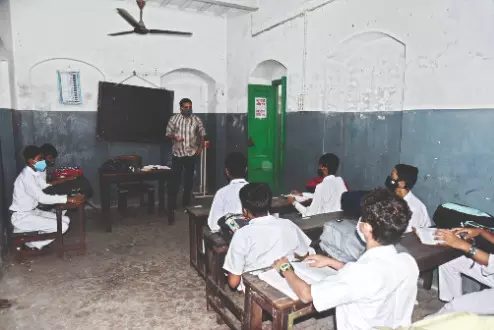
Kolkata, Oct. 27 -- In a significant move aimed at preparing students to respond to medical emergencies, the West Bengal Council of Higher Secondary Education (WBCHSE) has incorporated cardiopulmonary resuscitation (CPR) and other first-response techniques, including the Heimlich manoeuvre, into the Class XII Health and Physical Education syllabus.
The new module, introduced in the fourth semester, focuses on emergency care procedures such as handling cardiac arrest, choking, and drowning. Students will be taught the concepts and the sequence of steps required to restore heartbeat and breathing, as outlined in the new textbook.
WBCHSE President Chiranjib Bhattacharya said the council's objective was to familiarise students with emergency care techniques commonly taught in schools abroad. "Our goal is to impart conceptual understanding so that students can attempt basic response measures if a situation arises," he said. Bhattacharya added that a district-level teachers' orientation programme on the subject will be organised soon, involving medical professionals who will demonstrate the techniques to teachers for classroom use.
Dwipen Basu, coordinator of Health and Physical Education, State School Education Department, and one of the editors of the new textbook, said that while CPR is briefly mentioned in the Class VIII curriculum, it requires both physical strength and maturity to perform effectively. "That is why detailed instruction has now been included at the higher secondary level. Class XII students will not only learn the techniques but also be able to guide others," he said, noting that similar inclusions exist in the school curricula of 13 countries worldwide.
The new book's eleventh chapter, titled Primary Treatment of Sports Injuries, introduces the concept of CPR - describing the symptoms of cardiac arrest and the steps to maintain the functioning of the heart, lungs, and brain. It details how to check responsiveness, clear the airway, assess breathing and pulse, and administer chest compressions at a rhythm of about 100 per minute until professional help arrives. Similarly, the Heimlich manoeuvre has been incorporated to help students understand how to respond when a foreign object blocks the airway. The text outlines how to identify choking symptoms, perform abdominal thrusts, and position an unconscious person safely before seeking medical assistance.
Educators have largely welcomed the move, saying it will improve awareness among students, though many emphasised that practical training by qualified instructors remains essential to ensure the effectiveness of such lessons.
Published by HT Digital Content Services with permission from Millennium Post.
